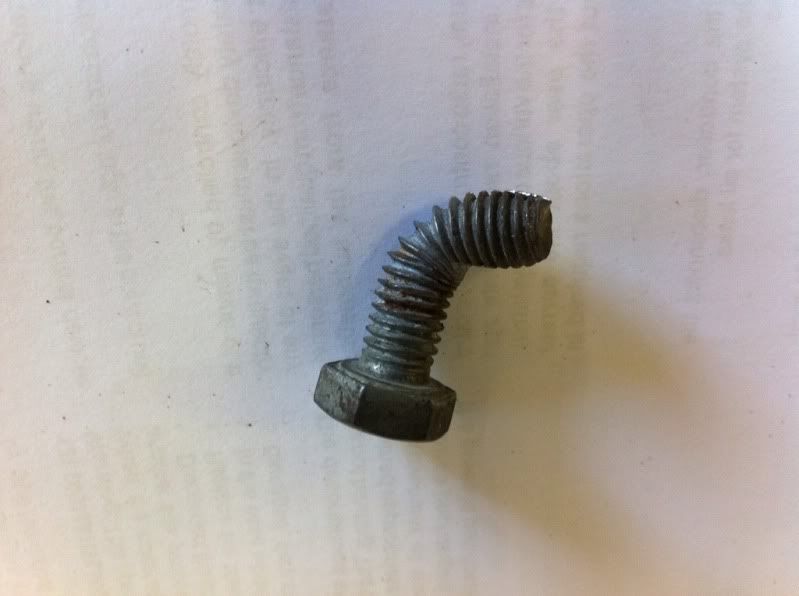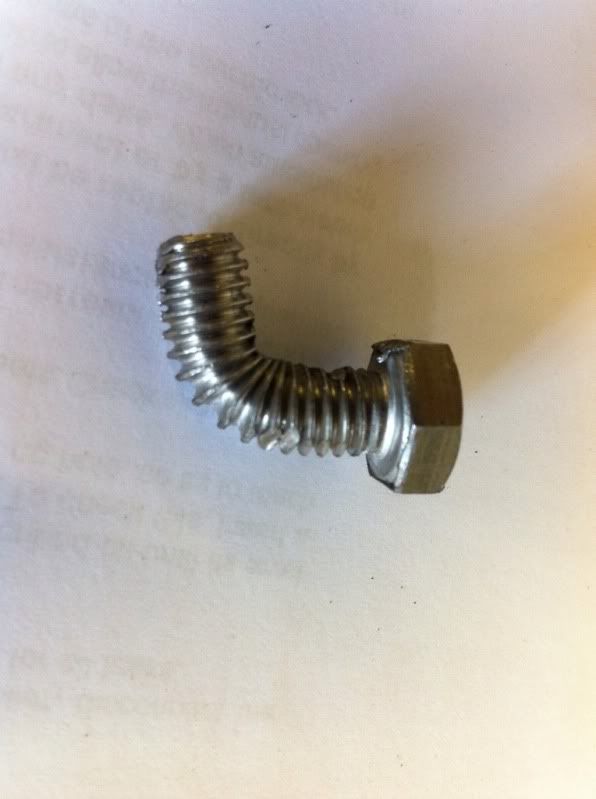Stainless Steel Bolts for Chassis & Suspension
Discussion
Very interesting guys, thanks very much.
So to sum up:
As far as strength is concerned the A2 version of SS is approx 85% as strong as the standard 8.8 alloy steel bolts.
A Chimaera is approx 82% of the curb weight of a sierra Cosworth (where the original brakes came from i believe) so the SS bolts are still within spec
I am curious as to why only tensile strength values have been mentioned? Looking at most of the bolts in the suspension,steering and brakes, they all seem to need shear strength in their use.
In use copper slip, or similar, must be applied to prevent galling and don't use in the winter where road salt could cause some corrosion.
More debate please
So to sum up:
As far as strength is concerned the A2 version of SS is approx 85% as strong as the standard 8.8 alloy steel bolts.
A Chimaera is approx 82% of the curb weight of a sierra Cosworth (where the original brakes came from i believe) so the SS bolts are still within spec
I am curious as to why only tensile strength values have been mentioned? Looking at most of the bolts in the suspension,steering and brakes, they all seem to need shear strength in their use.
In use copper slip, or similar, must be applied to prevent galling and don't use in the winter where road salt could cause some corrosion.
More debate please

Thanks for all your comments however being a curios sort of person i am keen to find out for myself.
So i carried out some crude tests on some stainless and standard plated steel bolts to see how they perform. First of all i put a standard plated hex bolt in my vice and thrashed it with a hammer.

As expected it bent over to roughly 90 degrees without snapping.
I then did the same to a stailness bolt of similar dimensions.

I expected it to be easier to bend over but it wasn't it felt about the same. I also expected it to snap or shatter but again it behaved in a similar fashion to the the steel bolt.
So there i was confused by what you have told me in this thread.
This is obviously a very crude experiment as i have no control over the force i was exerting with the hammer and i didn't take too much notice of how many times i hit the bolts.
A more scientific method was needed so seeing as I have a hydraulic press i thought i would use that. I can read off the force exerted on the pressure guage to keep the forces broadly similar.
So i took one of my old CV joint bolts, M10 cap heads, and supported it at either end and applied pressure in the middle. It took a little pressure before starting to bend but snapped once that pressure was increased.

This was dissappointing as these bolts are subjected to fairly serious shear forces and shouodn't snap but to be fair the bending action has some tensile force involved as well. But to be sure i hadn't picked up a duff bolt i tried another.

Same thing happened.
Ok how would a stainless version cope.

Better than i expected, slightly easier on the force required to bend it but it didn't show any signs of failing in the way the steel versions did.
I would prefer a bolt to bend under an abnormal load such as an impact to the suspension or steering so that you retain control of the vehicle rather than the bolts snapping with the potential resultatnt loss of control of the vehicle.
Does it make much difference then, bearing in mind the bolt sizes are probably much bigger than they really need to be just to give a large margin for error/misuse?
Interesting stuff eh????
Andy
So i carried out some crude tests on some stainless and standard plated steel bolts to see how they perform. First of all i put a standard plated hex bolt in my vice and thrashed it with a hammer.

As expected it bent over to roughly 90 degrees without snapping.
I then did the same to a stailness bolt of similar dimensions.

I expected it to be easier to bend over but it wasn't it felt about the same. I also expected it to snap or shatter but again it behaved in a similar fashion to the the steel bolt.
So there i was confused by what you have told me in this thread.
This is obviously a very crude experiment as i have no control over the force i was exerting with the hammer and i didn't take too much notice of how many times i hit the bolts.
A more scientific method was needed so seeing as I have a hydraulic press i thought i would use that. I can read off the force exerted on the pressure guage to keep the forces broadly similar.
So i took one of my old CV joint bolts, M10 cap heads, and supported it at either end and applied pressure in the middle. It took a little pressure before starting to bend but snapped once that pressure was increased.

This was dissappointing as these bolts are subjected to fairly serious shear forces and shouodn't snap but to be fair the bending action has some tensile force involved as well. But to be sure i hadn't picked up a duff bolt i tried another.

Same thing happened.
Ok how would a stainless version cope.

Better than i expected, slightly easier on the force required to bend it but it didn't show any signs of failing in the way the steel versions did.
I would prefer a bolt to bend under an abnormal load such as an impact to the suspension or steering so that you retain control of the vehicle rather than the bolts snapping with the potential resultatnt loss of control of the vehicle.
Does it make much difference then, bearing in mind the bolt sizes are probably much bigger than they really need to be just to give a large margin for error/misuse?
Interesting stuff eh????
Andy
Apache said:
Don't overlook the electrolytic corrosion aspect of SS and Steel
So consider this scenario and tell me which will corrode the most. A plated steel nut threaded onto a plated steel bolt or a stainless steel nut on a plated steel bolt, without any secondary treatment ie copperslip or grease?Yup, i understand that but i'm not sure that is a valid point. Most of the suspension and steering fixings are via external brackets or lugs. There are four bolts that pass through the tubing that supports the outriggers but they are sleeved.
There are, however, six bolts, that fix the centre chassis section to the body, that screw into threaded holes that are open to the inside of the tubing but even if they do corrode i can't see how it could be so bad that they would loosen or unscrew or pull out.
There are, however, six bolts, that fix the centre chassis section to the body, that screw into threaded holes that are open to the inside of the tubing but even if they do corrode i can't see how it could be so bad that they would loosen or unscrew or pull out.
Gassing Station | General TVR Stuff & Gossip | Top of Page | What's New | My Stuff




